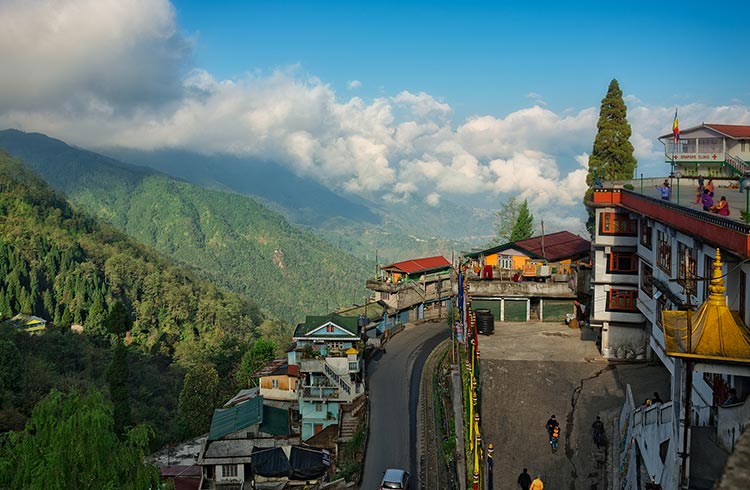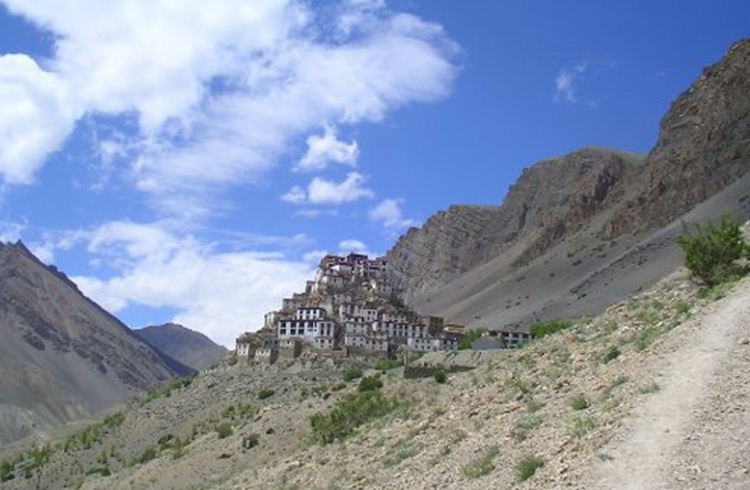India Travel 101: A Guide to Exploring Northern India
India has so much to offer travelers, with astonishing World Heritage Sites, delicious cuisine, and of course, the culture shock.
 Photo © iStock/Oleh_Slobodeniuk
Photo © iStock/Oleh_Slobodeniuk
Rich in history and culture, India is an incredibly fascinating country to visit. It has so much to offer in terms of astonishing World Heritage Sites, delicious cuisine, as well as some amazing shopping. A great place to start exploring this captivating country is in the north, though before you pack your bags and jet on over, here are some guidelines to keep in mind when visiting the diverse, northern regions of India.
Highlights of Northern India
To begin your journey, a tour through Old Delhi is a great way for exploring and getting to know the culture. There are many tourist attractions in the forms of forts, mosques, palaces, and temples. One such place is the majestic Red Fort, a World Heritage Site.
Travelling southwest from Delhi, you will find yourself in the famous Pink city of Jaipur. Capital of Rajasthan, Jaipur is definitely worth a few days stay. It has a number of forts and monuments, such as the Hawa Mahal (Palace of Winds), Amber Fort, City Palace, as well as the famous observatory, Jantar Mantar, (World Heritage Site). The list is endless!
Agra, situated in the Uttar Pradesh state, is famous for its three World Heritage Sites - the Agra Fort, Fatehpur Sikiri, and of course the majestic Taj Mahal. A trip to India is not complete without a visit to the Taj Mahal. It is open every day of the week except for a Friday, and the best time for visiting the site is early in the morning or late in the afternoon when the sun casts the best light, perfect for photographs.
Another popular tourist destination is Khajuraho. This town has the largest group of medieval Hindu and Jain temples that are famously referred to as the ‘Karma Sutra’ temples because of the beautifully ornate erotic sculptures that adorn the walls of the temples. The collection of temples in Khajuraho are listed as World Heritage Sites and are considered to be one of the ‘seven wonders’ of India.
No trip to Northern India would be complete without visiting Varanasi, situated on the banks of the Ganges River. A wonderful way to witness the daily routine of the locals is to take a morning and evening boat ride out onto the Ganges. However, do take precaution and do not bathe in the water, let alone drink it. There is an incredibly high amount of pollution in the water.
Indian cuisine
Indian food is widely recognised for its gorgeous, aromatic curries and tasty breads. Delhi is home to the Mughlai cuisine and many of the restaurants and food stalls reflect this influence in the forms of Tandoori chicken, Butter chicken, Korma, and Biryani.
Almost every second street vendor sells deep-fried Pakhoras. These delicious snacks come in a variety of flavours, such as chilli, vegetable, and paneer.
There is a very popular Rajasthani dish called a Dhal Bati Churma, which is highly recommended for any visitor to try. This dish consists of three types of dhal (lentils), ranging from mild to extra hot and spicy, three different types of bati (bread), and three varieties of churma (sweet dish). Curried vegetables, yoghurt, and rice also accompanied the dish. The whole meal only costs 225 Rupees, which is about $5/£3. Indian food is incredibly cheap (and incredibly tasty as well!).
Keeping with the trend of local dishes, the drink to order is a lassi. This yoghurt drink is made by blending yoghurt, water and spices together and can either be plain, sweet, salty, or with mango. On the other hand, do not drink the tap water in India, even when brushing your teeth. Only drink from store-bought bottles and those supplied in the hotel.
Getting around
The transport in India is quite an experience in itself and there is one mode of getting around that definitely deserves to be mentioned. If you are brave enough you can attempt an auto-rickshaw. These small, two-passenger contraptions go whizzing through the streets of India, in whichever direction they so please. Road rules do not seem to apply in some situations and approaching on-coming traffic is normal, apparently.
Sometimes it is best to keep your eyes closed while the driver winds his way through the bustling, chaotic streets, with one hand firmly on the horn and the other gripping the steering wheel. I must admit that they are a very convenient, cheap way to get from way place to another, though the driving skills are somewhat left to be desired.
Culture shock
India can seem quite overwhelming at first, mainly due to the incredible amount of people everywhere. In the crowded cities of Delhi, Jaipur, Agra, and Varanasi, there are some instances when you may have to literally rub shoulders with locals while walking through the streets, markets, and trains. The best advice is to go with the general flow of the crowd, and if it becomes too intense, then you can ‘escape’ into a restaurant or shop for some peace and quiet.
The extremely high level of noise is another factor, with the honking of vehicles being the major source. Even when traffic comes to a standstill, people sit with their hands on horns. It is quite the culture shock at first, but eventually it becomes a background noise and one can hardly notice it.
Another aspect are the animals. In Old Delhi you will be crossing roads with dogs, goats, pigs and cows. While in Varanasi the water buffalo serenely sun-bathe themselves along the Ganges river. With that said, make sure you wear closed, comfortable shoes (preferably not new) when walking through the streets, because you never know what you might step in, around or over.
Something else that might not be considered a common sight are the open cremations in Varanasi. Only men are allowed to attend the ceremony and out of respect you are not allowed to take photos while walking past. However, if you are on a boat on the Ganges and you are keen on taking a photo, then there is the opportunity if you are a good distance away. It is best not to look too closely at the cremation, because you might happen to spot a foot sticking out of the burning fire, and the smell of burnt hair can be a bit off putting.
The people
Indians are incredibly friendly, gracious, and humble people. They are a close-knit community and personal space is, in most situations, not an issue.
The younger generations like to practise their English whenever possible. If you find yourself in a queue, on the train, or even at a food market, they might start asking you questions such as your name, where you are from, are you married, do you have children, etcetera. This may seem very personal and forward of them, but they are merely doing it to be friendly and ultimately practise their English skills at the same time.
The people of India will make you feel incredibly welcome in their country, and your journey will feel much more special and meaningful because of their generous hospitality.
About the Author: Thea Felmore
Ever since the travel bug bit 10 years ago, I have been traveling the world visiting fascinating and captivating countries. When I am not gallivanting around the globe, you will find me at home in Cape Town, writing eagerly about my adventures and saving up for my next trip. Between that I manage to fit in time for my BA degree studies in English and part-time job. With my enthusiasm and eagerness for traveling, along with my passion for writing, I hope to one day have a full-time profession in travel writing.
Heading to India? Download our FREE Insider’s Guide!
Related articles
Simple and flexible travel insurance
You can buy at home or while traveling, and claim online from anywhere in the world. With 150+ adventure activities covered and 24/7 emergency assistance.
Get a quote


No Comments